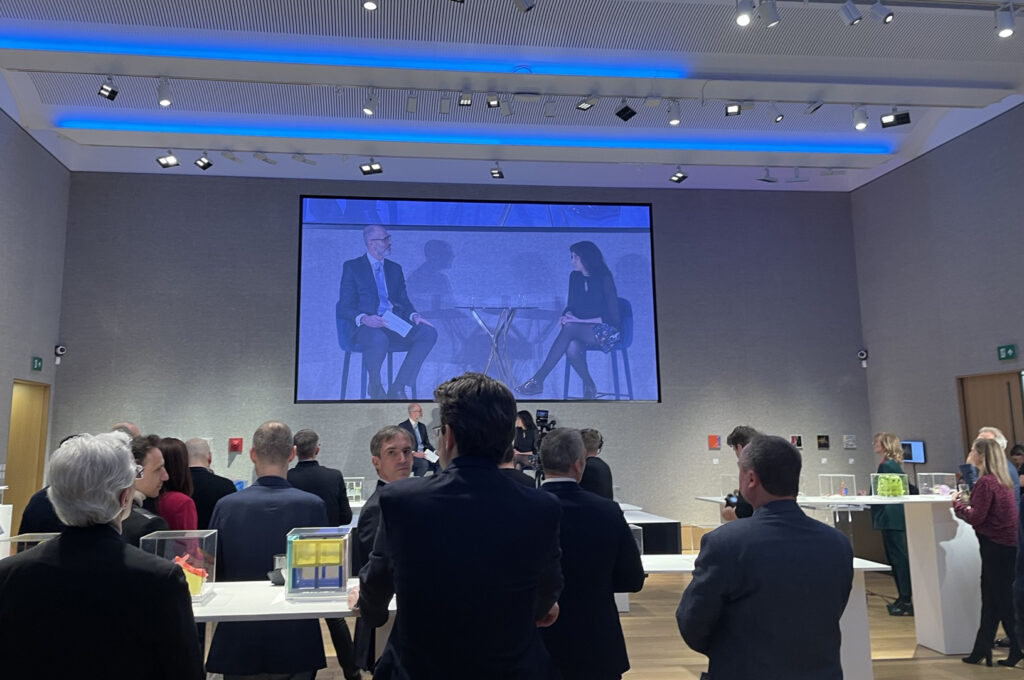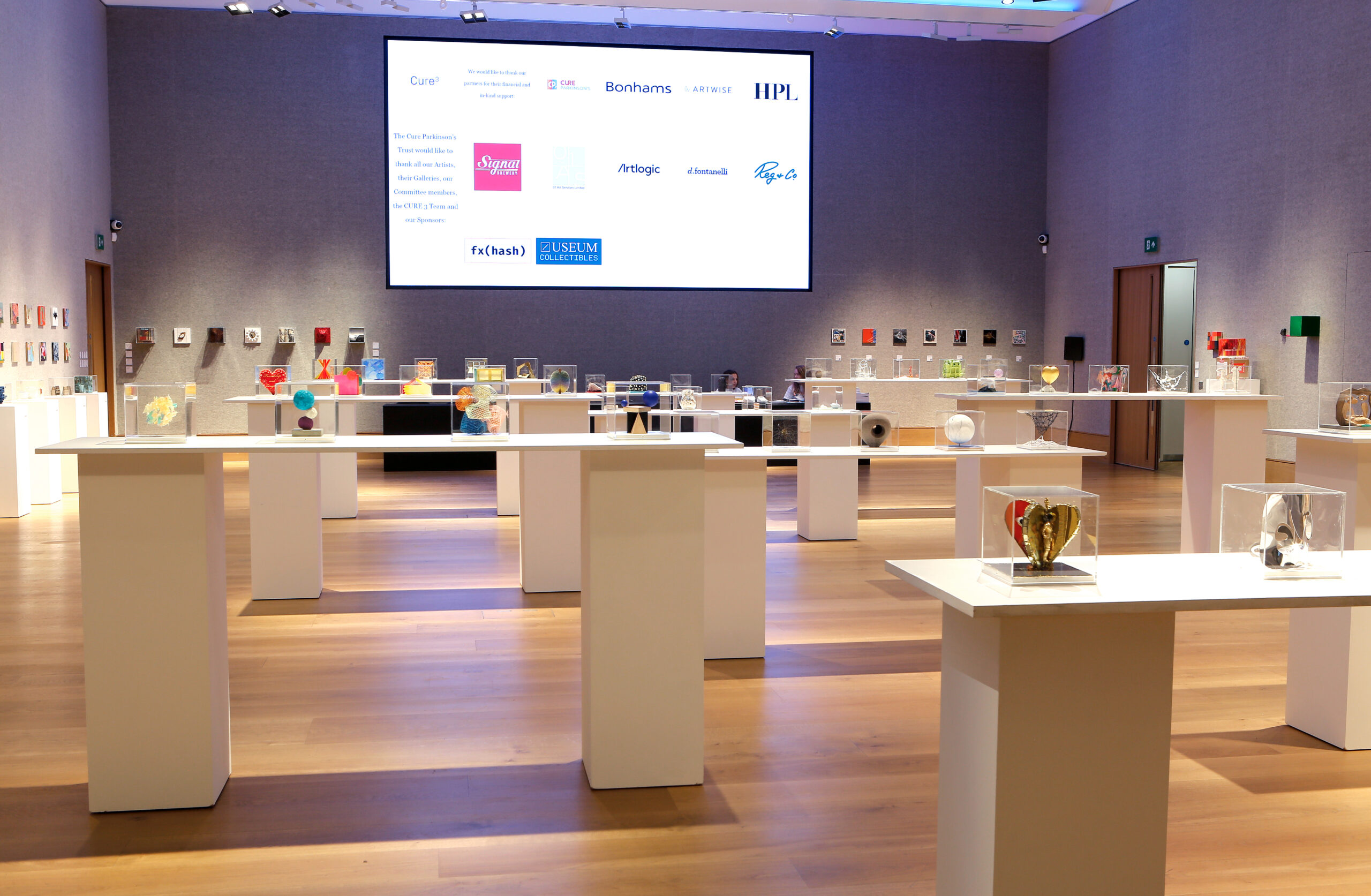Doing good with NFTs: Digital Art Exhibition raises €270,000 for Cure Parkinson’s Clinical Trials
Who said NFTs are just vanity items for early web3 adopters? In January, Cure3 2023, a prestigious arts fundraiser for Cure Parkinson’s Trust that was held at Bonhams in London, raised €270,000 with digital artworks minted as NFTs. And the best is yet to come: due to the unique qualities of NFT art and the inclusion of Charitable Resale Rights the charity has been able to reap the royalties of secondary sales ever since and for years to come. Dr Foteini Valeonti, Innovation Fellow at UCL, founder of USEUM Collectibles, and member of the EBA NFT Working Group, led the fundraiser’s crypto art strategy, organising and co-curating, alongside Alex Estorick, its NFT exhibition.
Seven NFT artists raise a third of all donations
“Raising quarter-of-a-million pounds in such challenging market conditions, demonstrates the sheer potential of crypto art NFTs as a complex, yet equally powerful new fundraising medium”, Foteini sums up the result of the generative art charity project. A success that impresses even more, when put into perspective. Out of the 96 artists, who contributed to the five-day event, which included blue-chip artists, such as Tracey Emin, Mona Hatoum and Sir Frank Bowling, only seven generative, crypto artists – Anna Carreras, Anna Lucia, Lunarean, Marcelo Soria Rodriquez, Nat Sarkissian, Iskra Velitchkova, Yazid – raised over a third of all donations. A stunning success.

Bringing together the digital and the physical
A success that was based on a clear strategy. Artwise Curators, co-founders and curators of Cure3, knew that introducing crypto art to a traditional art exhibition would be a delicate undertaking, especially given their reputation of working with the best, most interesting, and well-selling artists. However, intrigued by the potential of NFTs and the crypto art market Artwise Curators approached Foteini last April, commissioning her to lead the Special Section of Cure3 2023, organising an NFT exhibition.
When asked about her strategy, Foteini explains to EBA: “Organising a successful NFT exhibition, especially in dire market conditions, in my opinion comes down to having the right partnerships. This was my strategy and guiding principle in preparation of the NFT Exhibition of Cure3 2023, from the partners down to the individual artists Alex and I had the honour to work with. As such, I invested time into bringing the right partners onboard, i.e. the leading NFT marketplace fx(hash), as well as Alex Estorick, who comes from an entirely different background to mine (which is engineering), as an Art Historian, extremely knowledgeable of the crypto art market.”

Alex Estorick, editor-in-chief at the leading crypto art publication Right Click Save, developed the curatorial bridge between the traditional art exhibition of Cure3 2023 and its NFT Exhibition, which he also co-curated, through the theme of generative art. Alex explains: “I feel that generative artists who use code to generate visual outputs have been ignored by the mainstream art world for the past 60 years. By creating a market for code-based art, the NFT has brought with it a revival – indeed a golden age – of generative art. This is righting a wrong of art history.”
Charitable Resale Rights – a uniqueness of NFTs
The unique feature and bigger picture of the NFT sales however was the introduction of charitable resale rights. A core difference between traditional art and NFTs is that due to web3 technologies like blockchain and smart contracts, crypto artists can do something traditional artists are unable to do: they can verify their work themselves and get in contact with collectors directly. Also, crypto artists can keep full control of the artwork for its complete lifetime, i.e., even after it sells and thus profit every time their work changes hands – or they can pass on all or some of these secondary sales royalties to a charity, like the NFT artists did for Cure3. These charitable resale rights allow the nominated charity to continue to reap the benefits from secondary sales on an ongoing basis. Based on on-chain data, since January, Cure Parkinson’s Trust has been receiving on average 1,000 EUR per month, passive income. Foteini explains: “Our goal at Cure3 2023 was to develop a new model for charitable giving in web3 and, seeing it all in action, raising a substantial amount of money with the generosity of participant artists, while establishing Charitable Resale Rights to offer donations to Cure Parkinson’s in perpetuity has been extremely rewarding and just goes to show the sheer potential of NFTs”.

